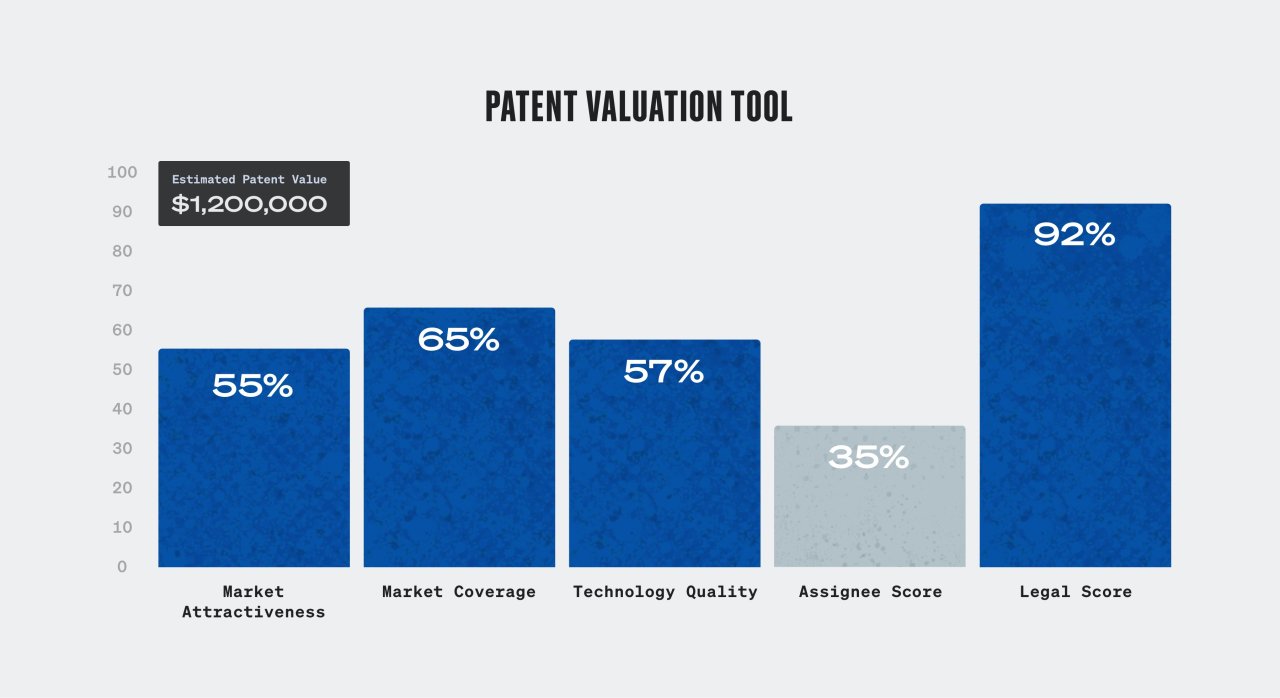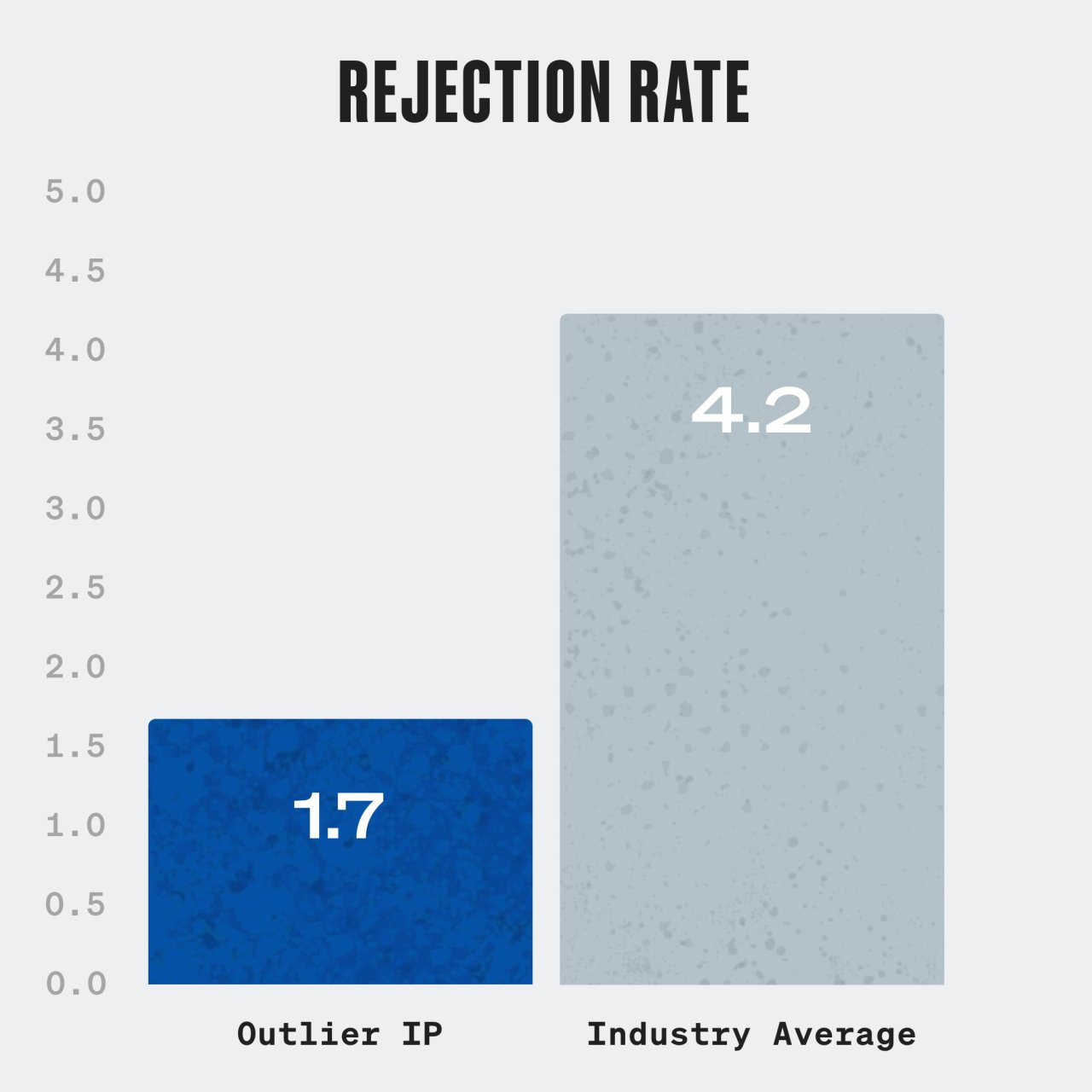It can be difficult to evaluate patent attorneys. Everyone talks a good game—we get it.
If we were to hire patent attorneys, we would look at qualitative and quantitative metrics.
Qualitative metrics include: Did the attorney
(1) capture the most valuable, highest leverage business opportunity?
(2) capture "chokepoints?"
(3) exclude the right competitors?
(4) anticipate technology trends and how the supply chain will consolidate or evolve over time?
(5) help anticipate and budget for costs?
(6) right-size" strategy based on Examiner analytics?
Check out our Approach page to learn more about how we meet these metrics.
Quantitative metrics include:
(1) allowance rate relative to art unit,
(2) rejection rate relative to art unit,
(3) time to allowance,
(4) time to respond to a rejection, citation counts, patent valuation, and many more.
This page and the data below is all about quantitative metrics, which, as discussed above, only tell a part of the story. But we crush these metrics too.
Higher Patent Valuations
Our clients' patents receive
Our clients' patents routinely receive top marks from various valuation methodologies, and can represent a 100x return on investment for our clients.
(This chart is on a patent that we drafted for one of our clients in the UAV space).
M&A Ready Patents
"Outlier's approach to patents made a big difference in M&A conversation and other partnership discussions." - Alex Fly, CEO, Quickpath AI.

Higher Allowance Rates
Our approach leads to:
Our allowance rates are upwards of 90% compared to the industry average of 64% in the software space.
(Our rates would be even higher if we removed cases that clients no longer wished to pursue, which represent about half of our un-allowed applications.)
Over-delivered
"The Outlier team was upfront on our chances of success. They were able to tell us what was going to happen before it happened, so there weren't any surprises." - Alberto Pina, co-founder PorchPass.
Lower Rejection Rates
Our approach leads to:
The average software patent is rejected 4.2 times before final disposition, but our clients' patent are rejected 1.7 time on average before allowance.
Our clients save an average of $9,000 per patent application because our patents are allowed with fewer rejections.
Lower Costs Via Fewer Rejections
"Outlier's approach saved us thousands of dollars per application as all of our applications got allowed with zero to one rejection." - Roman Sandoval, CEO, Allosense.
What are the next steps?
-
Schedule a Meeting
We’ll talk through:
(1) whether your product (or a portion thereof) is patentable, and
(2) whether it makes sense for you to file a patent.
(3) We don’t do cringe-y sales calls. If we are not a good fit (or if you don’t need to file a patent), we’ll let you know and wish you the best.
-
Discuss Strategy & Details
If we are a good fit:
(1) we’ll dig deep into your product to learn it inside and out,
(2) we’ll discuss the competitive landscape, and
(3) we’ll make sure that we are capturing subject matter that is patentable, commercially valuable, and strategically important
-
We Draft, You Review
We write, you review:
(1) we’ll draft figures/claims first and check-in
(2) once you approve, we’ll draft the rest of the application, and
(3) discuss whether our analytics report will help with investors, fundraising efforts, strategic partnerships, etc.
Schedule a Meeting
Let’s talk through your product, discuss whether it is patentable, and whether you should file a patent.


